Recent Water Damage Posts
From Cannon Beach to Astoria, SERVPRO® of Clatsop, Columbia Counties has you covered for Water Damage
5/13/2024 (Permalink)
Need Water Removal or Flood Cleanup?
Water damage can strike at any time. SERVPRO® of Clatsop, Columbia Counties is always ready for your call with water extraction services nearby because we understand time is of the essence when water damages your property. Whether a water leak, pipe burst, sewage backup or you experience a basement flood, we are dedicated to responding quickly with our top-tier equipment to clean up and restore your home, rental, or business property.
Our professionals specialize in water damage restoration, with training focused on restoring salvageable items, accelerating drying time while documenting the entire restoration process.
SERVPRO® of Clatsop, Columbia Counties is available 24/7 for your water damage needs. Call us at 503-966-7061.
DOs and DON’Ts – Sewage Damage | SERVPRO® of Clatsop, Columbia Counties
6/13/2023 (Permalink)
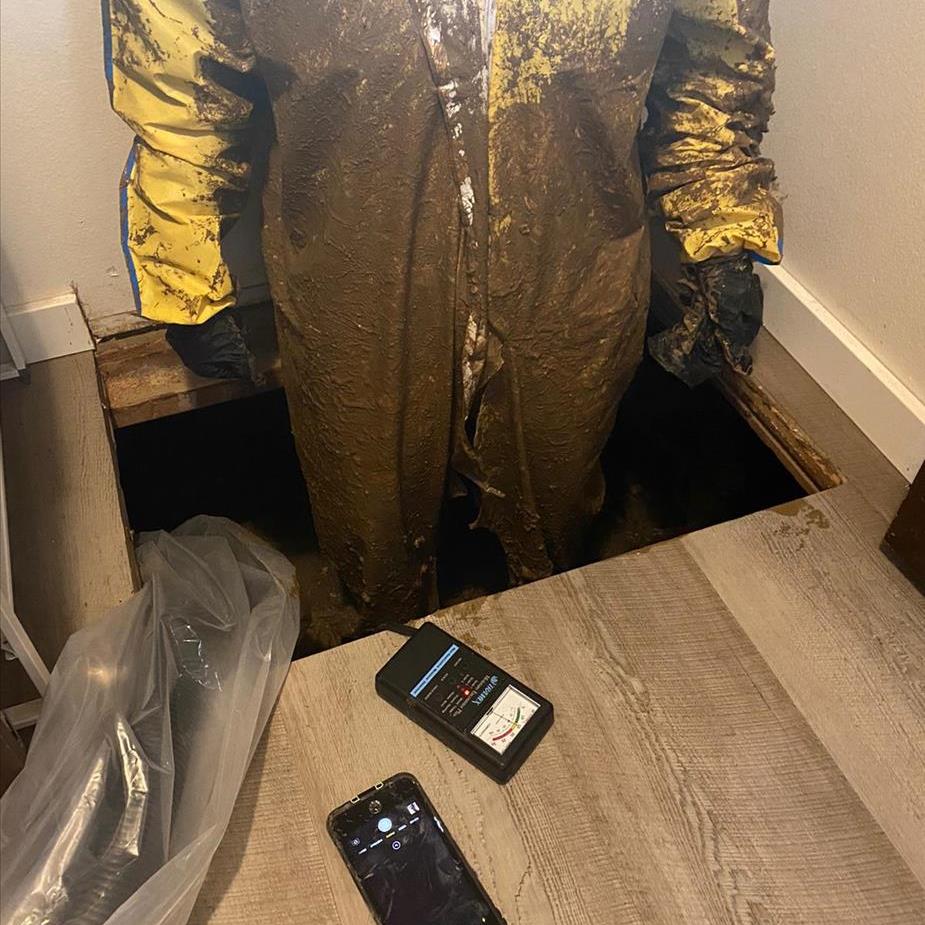 At SERVPRO of Clatsop, Columbia Counties, no job is too big, too small, or too gross. Call us today if you experience any form of sewage damage.
At SERVPRO of Clatsop, Columbia Counties, no job is too big, too small, or too gross. Call us today if you experience any form of sewage damage.
Storms can cause heavy rainfall and tax our local sewer systems, potentially causing all sorts of problems in and outside of your property. Water contaminated by sewage can contain a multitude of contaminants including bacteria and viruses. Any contact with sewage or surfaces and materials contaminated by sewage should be avoided unless the proper precautions are taken.
SERVPRO® has more than 50 years of experience in safe sewage cleanup, so we know a thing or two about doing it the right way. Here are the dos and don’ts of dealing with sewage damage:
DO
Go to a safe area. Evacuate people and pets away from the home or business. Keep everyone away until the area has been restored.
Contact your insurance company. Professional cleanup & restoration companies work closely with insurance providers. You will want to contact your provider immediately to file a claim. Take down your claim number so you can provide it to a SERVPRO team member later and speed up your claims process.
Contact the professionals at SERVPRO. Call 503.791.6714 to get connected with a SERVPRO of Clatsop, Columbia Counties team member. It is important to act fast so you can avoid the damage spreading. The sooner you act, the more money and time saved. It may also be necessary for us to extract some wastewater so that the next step can be completed.
Contact a septic company or plumber. It is critical to identify the source of the backup quickly. A plumber should begin repairing the issue as soon as possible. It may also be necessary to contact
Ventilate the area. If possible, open windows to encourage air to flow through your home or business. This may help slow mold growth by drying the area as much as possible before our SERVPRO team arrives as mold thrives in moist and poorly ventilated spaces.
Take pictures of the damaged area and contents. You can do this by yourself or with your insurance claim field adjuster after the area has been deemed safe to enter. Pictures should include the damaged area, the source of the sewage backup, any damaged personal or business property and possessions and structural damage.
DON’T
Don’t touch anything. Avoid skin contact with any sewage or sewer water. Remember, get everyone out of your home as quickly as possible.
Don’t eat or drink anything exposed to the sewer water. No one in your home or business should use toilets or sinks connected to the sewage lines. Don’t drink any water from your sink or filtered water hookups that are connected to the backup line. If you’re unsure – do not use it.
Don’t remove items from the area. You should not touch anything that has been exposed to sewage. Our SERVPRO team will keep a record of all items removed from the damaged area, including those deemed unsalvageable. Documenting and keeping a good record of all affected items is an important part of the claims process.
Don’t try to clean it up. You may be destroying evidence that could impact your insurance claim. Leaving the area after you call your insurance, the professionals at SERVPRO of Clatsop, Columbia Counties, and a plumber, is the best thing you can do. Allow the experts at our SERVPRO to help you return your home or business to safety.
If you discover sewage damage in your home or business, you can count on our team at SERVPRO of Clatsop, Columbia Counties to handle the cleanup and restoration. Contact us any time day or night for emergency services.
Spotting Water Damage is Not Always Easy | SERVPRO® of Clatsop, Columbia Counties
6/13/2023 (Permalink)
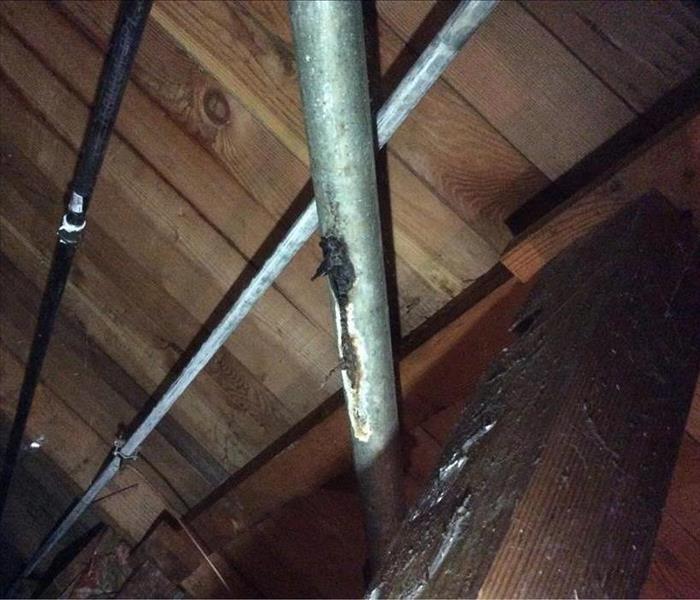 Seeing signs of water damage? Call SERVPRO of Clatsop, Columbia Counties today to get the restoration process started.
Seeing signs of water damage? Call SERVPRO of Clatsop, Columbia Counties today to get the restoration process started.
Water damage at your business can be slow moving and hard to notice. Often, it’s easy to overlook the first signs of an issue. Before you realize, it’s become a significant problem and your business needs costly repairs and cleanup.
Water damage can happen to any business owner––even those who are diligent enough to do regularly scheduled maintenance. But there are signs you can spot early that will help you correct problems and protect your investment.
Curious about what you need to look for when you’re searching for water damage? Here are some tips that may help you spot the hidden signs of leaks and damage that might be lurking in your buildings.
Most of these tips are simple and don’t require a lot of time, money, or expertise.
Your water bill is rising - Has your water bill jumped over the past few months? That can be a sign there’s a leak somewhere in your pipes. Keep an eye on your water meter, if it is jumping higher and higher, your plumbing might be leaking water somewhere. Check your fixtures and underneath any cabinets with sinks. You might notice moisture, condensation, and damage if your plumbing system has failed.
Test your toilets - If you notice water seeping from the base of any toilets in the bathrooms, that’s a clear sign. You may also see issues with the flooring around the toilet – staining or another sign of damage.
Wood has started to show signs of warping and damage - Wood can be anything from valued antique furniture to hardwood floors to windowpanes and door frames. These items can be damaged within just a few days so if you see damage or swelling, get the restoration process started sooner rather than later.
If you notice any signs of a leak, seek professional help to repair it. It will save money on your water bill and help you minimize water damage while protecting your assets.
Visible microbial growth – Mold or mildew can be a sign of leak. Water follows gravity down so if you see growth anywhere, check the surrounding areas for leaky pipes, a leaky spot on the roof, or excess moisture present.
If you see any of these signs of water damage, contact SERVPRO of Clatsop, Columbia Counties right away. We’ll come inspect the area, find the leak, and put a plan together to make your property whole again. We pride ourselves on making it seem “Like it never even happened.”
Put Your Trust in the Pros in Green | SERVPRO® of Clatsop, Columbia Counties
5/6/2022 (Permalink)
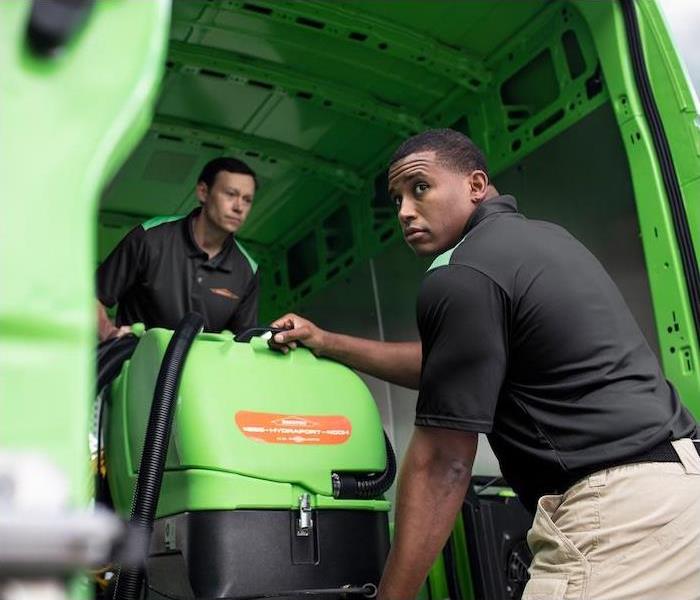 SERVPRO of Clatsop, Columbia Counties is your local restoration expert. We are the #1 choice in cleanup and restoration.
SERVPRO of Clatsop, Columbia Counties is your local restoration expert. We are the #1 choice in cleanup and restoration.
Apart from offering a variety of reliable restoration services, SERVPRO eliminates your worries by being available 24⁄7 for all your needs.
No matter what your emergency might be, we are only one phone call away. Here’s what the pros in green can help you with today:
Water Damage
Flooding comes unannounced and can cause serious damage to your home or business, regardless of how severe. To be exact, floods cause more than $10 billion in damages nationwide every year.
At the beginning of the year, flood damage hit coastal Oregon highways heavily. Landslides, flooding and damaged roads were just some of the destructions caused by the extreme rain. A witness reported the asphalt cracking and the culvert undermining. Many homes and businesses throughout Clatsop County were impacted by the severe flooding.
Home and business flooding is more common than you might think, and it’s almost certain to occur at some point in life. However, that does not mean that you are helpless in dealing with it.
SERVPRO has the right tools to repair the damages. With our tools, we detect hidden moisture and extract standing water. Furthermore, we help you in developing a water damage restoration plan so that your home is clean, dry and restored to preloss condition.
Fire Damage
According to the NFPA, a fire department in the United States responds to a fire every 23 seconds, and there was approximately $8.1 billion in direct property damage and losses nationwide in 2020.
If your home or business has sustained fire damage, we’ll tackle it right away with our seven-step restoration process. The first step is to inspect and evaluate damage before proceeding with repairs and construction.
Storm Damage
Storms can cause all sorts of floods, tornadoes and wildfires. We focus on restoring all your damages in the least amount of time.
Storm and water damage can affect not only the structure of your home but your belongings as well. SERVPRO specializes in content restoration, with the mindset of restoring rather than replacing.
Besides damaging your property and your house or business structure, storms can destroy your belongings as well. SERVPRO has expertise in this area, too. With content restoration, we help you rescue your belongings without having to replace them.
We offer dry cleaning, wet cleaning, foam cleansing and abrasive cleaning, among other services. For deep-cleaning, we also offer move-out services, so we can bring your home back to preloss condition in record time.
What Sets SERVPRO Apart?
We are reliable, and we care. We eliminate all your worries and serve you all day, seven days a week. You can contact SERVPRO experts via our 24⁄7 Emergency Line and receive immediate assistance.
Our experts in green are part of the No. 1 cleanup and restoration team in the nation with more than 50 years experience. We’re your local restoration provider, but we also have a network of more than 1,900 locations around the United States. We’re here to make your house or business look “Like it never even happened.”
No matter the extent of the damage sustained, SERVPRO has the resources and personnel to help your home or business recover from its disastrous effects. Contact us anytime when you need a dependable team to help you rebuild your life.
Various Flood Types and the Elements That Cause Them | SERVPRO® of Clatsop, Columbia Counties
4/7/2022 (Permalink)
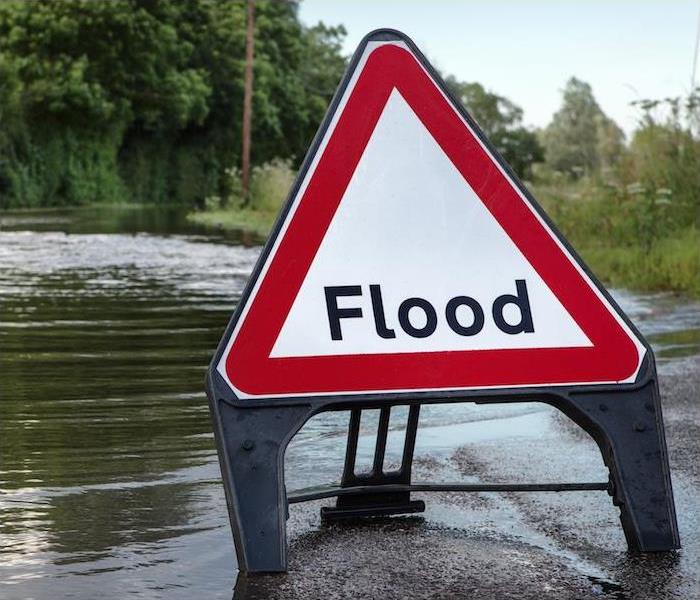 Regardless of the cause of the flooding, SERVPRO of Clatsop, Columbia Counties has the team to help you recover from any disastrous event.
Regardless of the cause of the flooding, SERVPRO of Clatsop, Columbia Counties has the team to help you recover from any disastrous event.
Flooding is the most common natural disaster, and it claims more lives in the United States per year than hurricanes, tornadoes or lightning. It can affect everything from individual homes whose property collects excess water to wide swaths of communities and cities.
According to the Oregon Department of Geology and Mineral Industries, the average annual repair costs for landslides in Oregon exceed $10 million.
Flooding affects all 50 states and every U.S territory, but there are similarities in types and causality among all them. There are three common types of flooding, and they happen for four typical reasons.
3 Types of Natural Flooding
Flash floods are common, and they happen when heavy rain passes or sits over an area and overwhelms the ability of the ground to contain the moisture. Excess water runs off and takes garbage cans, cars and more with it.
River floods are exactly what they sound like. When there’s too much water for a river’s banks to hold, the water spills over the sides and causes destruction.
Coastal floods happen in areas next to large bodies of water, when storm surges or cyclonic activity causes ocean or gulf levels to rise to flood levels.
The 4 Most Common Causes of Natural Flooding
Heavy rainfall. Storms with excessive rainfall, or storms that sit and rest over an area for an extended period can cause flash floods or river flooding. Urban areas are more at risk for rain floods, because the higher percentage of concrete and asphalt means there’s a lack of soil to soak up all that water.
Severe flooding happened as recently as January in Columbia County when heavy storms lead to landslides and caving roads. The damage made it difficult for local residents to travel even after the rain and flooding were long gone. One Portland man died after he was struck by a falling boulder on the Washington side of the Columbia River Gorge.
Oceanic activity. Storm surges, hurricanes and rising tides can cause water levels to rise in waves, which can invade coastal communities and wreak havoc.
Dams and levees failing. The most notable example of this in recent history would be the disastrous levee breaks during 2005’s Hurricane Katrina. Levees and dams fail when cracks occur or excess pressure overtakes the dam’s ability to contain the surge of water behind it.
Snowmelts and ice dams. In areas of the country where heavy snow and prolonged freezing temperatures are common, snow and ice can build up over a winter’s time, and when they start to melt, they cause rivers of water to flow through area communities. Ice dams or ice jams happen when rivers become blocked by built-up ice being carried downstream, causing the banks to overflow.
Regardless of the cause of the flooding, SERVPRO has the tools and teams to help your home or business recover from its disastrous effects. Contact us anytime when flooding or water damage makes a mess in your life.
How SERVPRO Takes Care of Your Water-Damaged Home | SERVPRO® of Clatsop, Columbia Counties
1/17/2022 (Permalink)
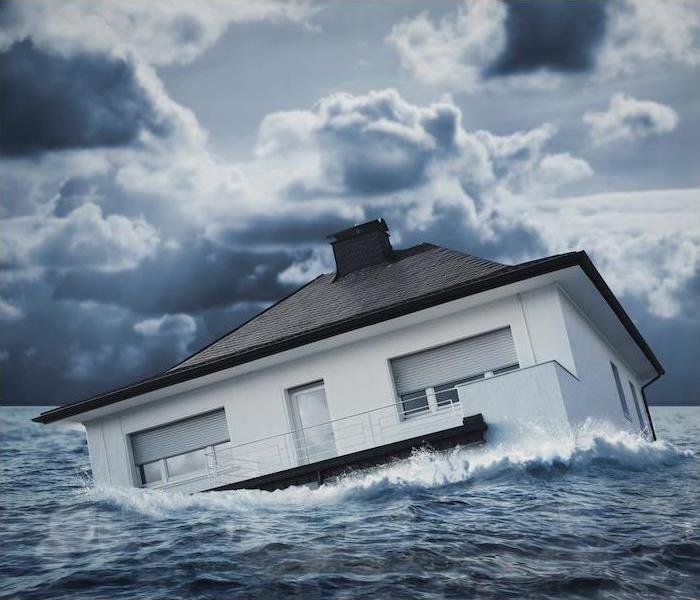 When water damage strikes, make the call to SERVPRO of Clatsop, Columbia Counties for A-to-Z cleanup and restoration.
When water damage strikes, make the call to SERVPRO of Clatsop, Columbia Counties for A-to-Z cleanup and restoration.
With most insurance-type disasters that befall homeowners, there’s one variable, and it’s outside factors, such as weather. Even with fire, most of the time there’s an immediate cause like a kitchen fire while cooking. But water damage can come either from without or within, and you almost never see it coming.
In fact, unpredictable water damage pains the lives of 14,000 unfortunate homeowners every day across the nation, and many of them reach out to SERVPRO when it happens. Should it ever happen to you, here’s the process you can expect.
Emergency Contact. As soon as you reach SERVPRO, you’re talking to an expert in recovery. We’ll ask some questions, and your answers will guide us to an understanding of the scope and nature of your water situation. Then we’ll settle on a time to come view it in person.
Inspection and Water Damage Assessment. We’ll arrive on site ready to get to work. The first task will be stopping any remaining water flow, then we’ll take a good look at the damage and determine our next steps. We’ll talk to you about any items we believe will need replacement, and any hazards in your home that may have resulted from the water damage.
Water Removal. We didn’t only bring warm bodies; we brought heavy machinery, too. Our powerful pumps will extract the water that’s causing you problems, no matter how many hundreds of gallons may be present.
Damaged Material Removal. Next we’ll dispose of those ruined items, to allow for ease of movement and faster drying of the remaining materials.
Cleaning, Sanitizing and Deodorization. We’ll scrub and clean all the surfaces and areas that have been doused, getting rid of the stains and odors water damage can leave behind. If your emergency is of certain types, there may be toxins or contaminants present, and we’ll take care of those too.
Drying. Next, we’ll go to work drying the place out to protect your surfaces from rot and mold, using high-powered HEPA vacuums to suck the excess moisture from every surface and dehumidify the atmosphere.
Monitoring. Every step of the way, you’ll have an expert on site, making sure each part of the job is done professionally and efficiently.
Repairs and Construction. Once everything is dried, cleaned and/or removed, we can perform the last part of the SERVPRO process, the restoration and reconstruction of affected areas. When you call SERVPRO, you’re getting a full-service solution—from flooded to finished.
When water damage strikes, make the call to SERVPRO for A-to-Z cleanup and restoration. We’ll make your damaged property look “Like it never even happened.”
Water Damage Numbers That Can’t Be Ignored | SERVPRO® of Clatsop, Columbia Counties
12/10/2021 (Permalink)
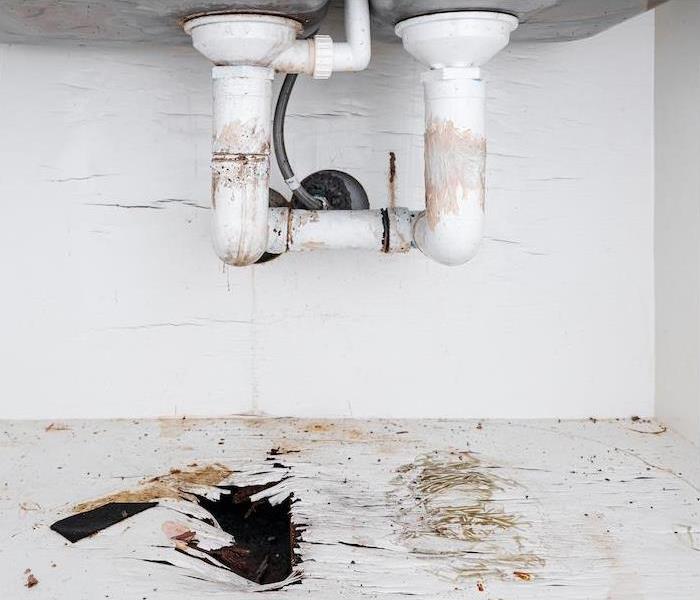 If water damage catches you off-guard and leaves you all wet, you’ve got help on your side. Contact SERVPRO of Clatsop, Columbia Counties.
If water damage catches you off-guard and leaves you all wet, you’ve got help on your side. Contact SERVPRO of Clatsop, Columbia Counties.
Numbers and statistics have a way of really driving home an argument, by putting a fine point on it. We could tell you, for example, that Americans love to go to the movies, and that would give you some basic information.
But if we really wanted you to know how much Americans love the cinema, we’d tell you that the MPAA reported a 2018 movie attendance total of 1.3 billion Americans—more than twice the combined total of both theme parks and professional sporting events.
See how much more effective that is?
The point we’re driving home today is the importance of keeping your plumbing and drainage systems well-equipped and maintained, and of keeping your roof and gutters in good shape, and we plan to do it with some pretty staggering numbers as teaching aides.
24. This is the percentage of all U.S. home insurance claimsmade because of water damage in the home. Burst pipes, roof leaks and the like add up to one claim per year for every 50 homes in the country.
48. When a water heater explodes or a flood invades, you’ve got this many hours to get it taken care of before you also have a mold problem. Mold starts setting up shop right away when moisture becomes present.
98. Here’s one you won’t forget: Around 98% of all basements will flood or have a moisture issue during the life of the home. There’s almost no getting around it.
10,234. When you do have a water incident, this is the standard claim amount, on average. Water has a way of damaging quickly and thoroughly, and it seeps through every available crevice to really stick it to you.
14,000. Water events happen an average of 14,000 times per day in the U.S. That means that before you finish this paragraph, another one has occurred since you started it.
13,000,000,000. Whew, that’s a lot of zeroes. If you lost count, there are nine, which means this is 13 billion, and that’s the number of dollars spent on repairs and restoration after water damage events each year in the United States.
Do you feel more aware of the massive reality of water damage now? Hopefully you do, and hopefully you feel more driven to pay attention to the state of your pipes, your roof and your water-using appliances. You can’t stop everything, but if you fix leaks right away and keep your plumbing updated, you stand your best chance of keeping these numbers far, far away.
If water damage catches you off-guard and leaves you all wet, you’ve got help on your side. Contact SERVPRO to see how we can quickly and fully restore water damage to your home or business.
Common Sources of Water Damage at Home | SERVPRO® of Clatsop, Columbia Counties
9/8/2021 (Permalink)
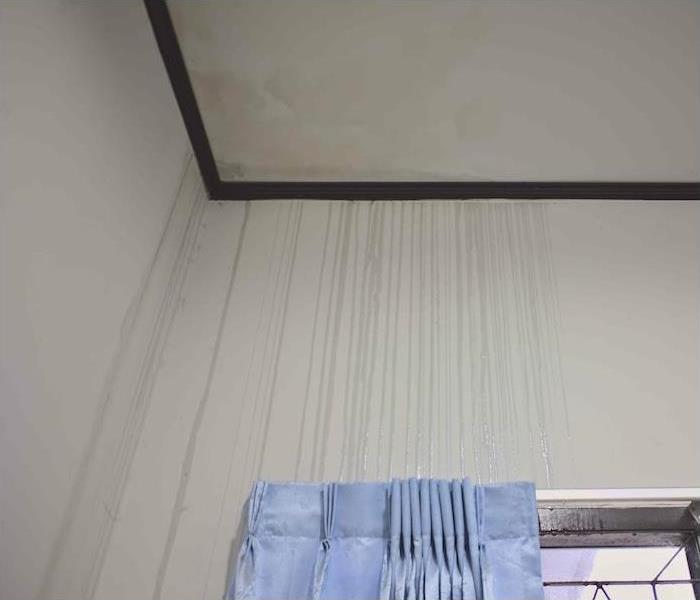 A water leak can turn into a big problem. Contact the SERVPRO of Clatsop, Columbia Counties team if you are dealing with any water damage.
A water leak can turn into a big problem. Contact the SERVPRO of Clatsop, Columbia Counties team if you are dealing with any water damage.
Nobody wakes up and says, “Gee, I sure hope I get to panic over some water damage this morning.” Unfortunately, water damage doesn’t really give us advanced notice before it happens. Water is always looking new places to travel, and any fissure or gap will do.
It’s important to know the ways you might encounter water damage, so let’s examine a few of the usual suspects.
Toilets. Toilets get used a lot, and wear and tear on flappers and wax seals can give way to leak issues.
Appliances. Water heaters, washing machines and dishwashers are all prone to developing leaks. Hoses and connections corrode or dry out over time, creating pathways for fissures, spills, and in the case of traditional water heaters, full-blown explosions.
Clogged gutters. Dirt, debris and leaves can gather in your gutters and cause water issues inside. Gutter backup can flood like the banks of a river and introduce streams of water into your attic and home interior, flaking your paint, ruining drywall and weakening wood beams.
Roof damage. Roof damage is the partner in crime for clogged gutters, and they pack a serious one-two punch. Hail, fallen limbs and old age can cause damage to shingles and roofing elements, allowing water to find its way inside.
Pipes. Old or damaged pipes are a frequent source of damage—this can be because of corrosion, winter freezes or even tree roots finding a crack in outdoor lines.
Blocked garbage disposals or other pipes. Excess food (or putting things like coffee grounds in the sink) can clog disposals, and hair and grease can clog sink drains and p-traps. Hard plunging and loose fittings can high-five each other and tag-team you into a floor full of water.
All pipes, appliances and roofs have normal life expectancies, and it’s important to keep up with the maintenance needs around your house. If you can catch a leak before it occurs, you can save yourself a lot of trouble.
If a water leak erupts into a big problem at home, you’ve got the best team in the business on your side. Contact SERVPRO today so we can get started.
Does My Basement Have Water Damage? | SERVPRO® of Clatsop, Columbia Counties
5/20/2021 (Permalink)
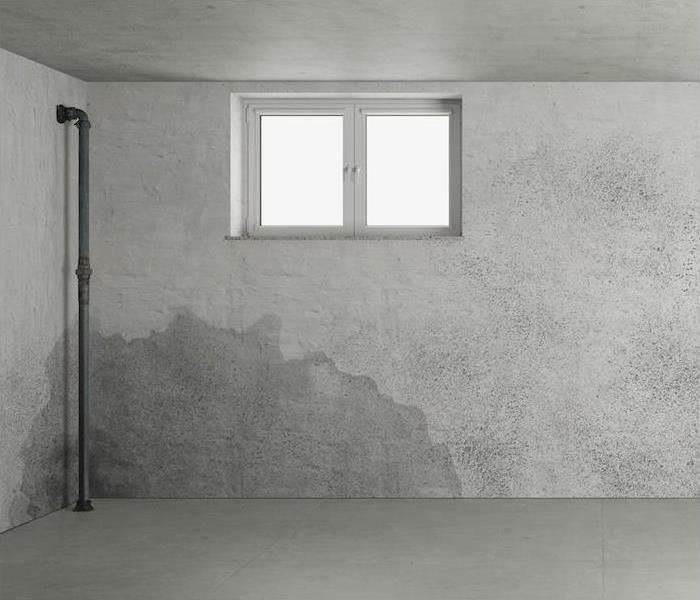 SERVPRO of Clatsop, Columbia Counties' restoration experts are ready to help you determine the best course of action.
SERVPRO of Clatsop, Columbia Counties' restoration experts are ready to help you determine the best course of action.
Oregon sees its fair share of gray, wet and cold weather in the winter months, so a basement is a valuable addition to a home. It provides additional storage space, shelter from inclement weather and can be used as additional living space or workout area.
However, since basements are dug into the ground, they naturally are more prone to experiencing water damage over the course of the home’s lifetime. It’s not a guarantee that your basement will have water damage, but its likelihood is high and should be part of regular inspections, formal or informal.
Below, we’ll look at some ways that water damage can manifest itself in your basement and how our highly trained team can help in case you do discover water damage.
Three Major Signs of Water Damage
Musky, unpleasant odors. Water that gets into the basement, while it could be clean water, can cause major issues in the way of odor if it sits around before evaporating. The scent can be an overwhelming and pungent smell due to mold and mildew that become present in the environment over time. Many people believe that all basements have a smell, but this is really only the case when there has been water damage in this space.
Flaking paint on walls or masonry. Many homeowners and landlords will often apply waterproof paint on the inside of a home, especially in basements because they believe that they can proactively thwart any damage. Unfortunately, many times this paint will simply mask the issues and then lead to even bigger problems down the road. Water that seeps in will at some point or another work its way through the paint and will commonly lead to chipping, peeling or bubbling on the surface.
Cracks in the foundation. While most homes settle over time, finding cracks in foundation is not normal and can be a sign of water damage. These cracks can appear in the floor, ceiling or the walls because water could be putting pressure on the structure in a way that it can’t uphold. Hairline cracks aren’t a huge cause for alarm, but if they become any longer or wider, they should be treated by a professional immediately.
Noticing signs of water damage in your basement? Call us today to have our expert water restoration technicians help you determine how to treat these issues and get your property back to normal as quickly as possible.
Take the Right Steps to Keep Your Home Safe From Rain Damage | SERVPRO® of Clatsop, Columbia Counties
4/7/2021 (Permalink)
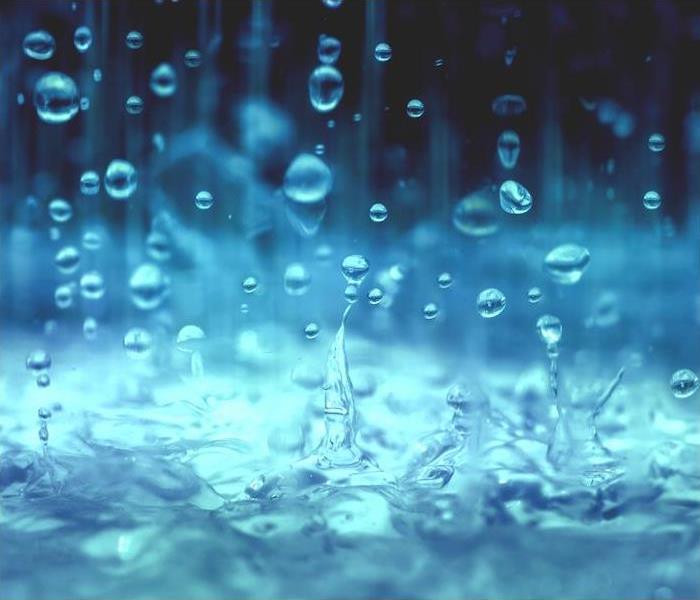 If you need help dealing with any damage caused by water, contact SERVPRO of Clatsop, Columbia Counties today.
If you need help dealing with any damage caused by water, contact SERVPRO of Clatsop, Columbia Counties today.
Many homeowners associate water damage with severe floods and storms or problems in the home (like a burst pipe.)
It’s easy to think of rain as a minor hassle and something that likely won’t damage your home. But that isn’t quite the truth. Rain can actually cause significant damage to your home over time.
How Common Is Water Damage?
Either you or someone you know will file a home water damage claim this year. That statistic may be surprising, but it’s true!
How do we know? Our team did some simple math (and factored in how many people the average person knows). About one in every 50 Americans will need water damage restoration this year. That translates into millions of American families and homeowners.
If you have a big social circle, more than one person you know might find themselves facing a water damage restoration project this year.
Home Maintenance Suggestions for You
Here are some helpful projects that can make a difference and protect your home from damage!
Correct any yard drainage issues. Knowing how your yard drains is vital to protecting your home. If you notice that your yard is draining toward your home, then you might want to get in touch with a landscaping expert to look for ways to protect your yard.
Landscape your yard using native plants. If you do a little homework, the flowers and shrubs you use to help you landscape your home and add curb appeal can also become an added layer of protection. Native plants can help. Talk to a local expert about native plants or visit a native plant sale.
Consider sealing your roof. Experts estimate that almost 95% of damage is caused by water finding its way through gaps in your shingles, which can be prevented with this step.
If you need help dealing with damage caused by water, fire or any other issue, we’re here to help you restore your home. We have crews who are available 24⁄7 in the event of an emergency. Contact us at any time to learn more about us and how we can help you restore your home to its original state.
Finding Water Damage in Your Home | SERVPRO® of Clatsop, Columbia Counties
2/1/2021 (Permalink)
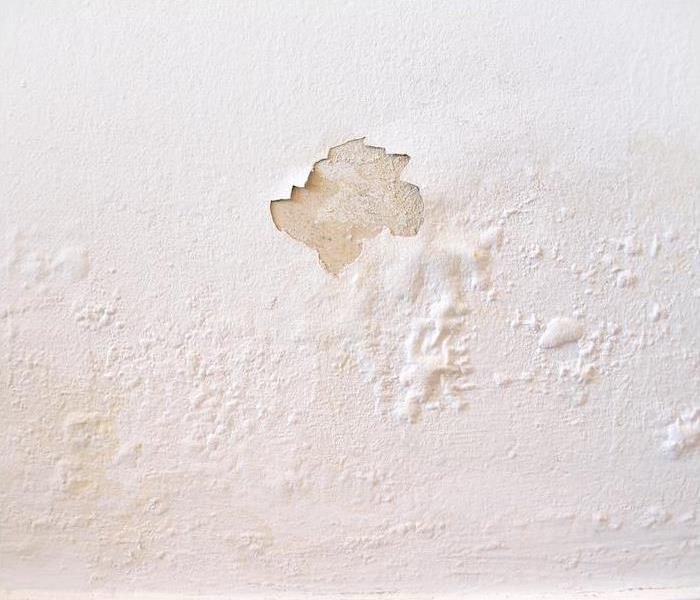 Do you have any water damage to your walls or ceiling? Contact SERVPRO and we will help guide you through the restoration process.
Do you have any water damage to your walls or ceiling? Contact SERVPRO and we will help guide you through the restoration process.
If you had to file a water damage claim on your home last year, you’re not alone. In fact, you’re probably in good company because that most likely includes some friends and neighbors in your community.
How common are water damage claims? They’re the most common type of homeowners insurance claim that gets filed. And about 1 in 50 Americans files them each year. (That’s why we know there’s likely been more than one claim in your neighborhood or community.)
Water damage claims keep growing, even as fire damage claims are falling.
Can You Spot Home Water Damage?
Many homeowners don’t know when to take the next step and call professionals to help with the water damage process. The signs aren’t always easy to spot. But once you know what they are, they’re unmistakable. Here’s what you might see when you’re home has water damage:
You see signs of fading and staining on the fabric in your home. You might notice jewel-toned curtains looking less vibrant or the upholstery on your couch sporting water spots. If you see these signs, your home has too much moisture and should be evaluated.
Your home smells noticeably musty. This distinctive scent is one of the first things you’ll notice when you’re dealing with mold damage. It’s an early sign so if you smell it, you need to call immediately to keep the problem from getting worse.
The wood in your home has started to show signs of warping and damage. Wood can be anything from valued antique furniture to your hardwood floors to your window panes and door frames. These items can be damaged within just a few days so if you see damage, get the restoration process started sooner rather than later.
If you have water damage in your home due to a burst pipe or another cause, you can count on us for restoration assistance. We have teams who are available 24⁄7 in the event of an emergency. Contact us at any time to learn more about our restoration services.
Yikes! My Carpet Is Soaked. What Next? | SERVPRO® of Clatsop, Columbia Counties
1/14/2021 (Permalink)
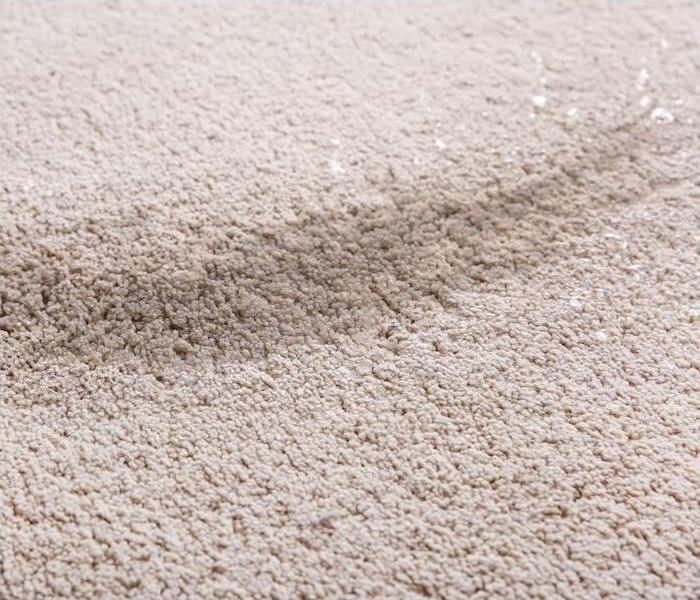 If you have water damage in your home, contact us right away. SERVPRO of Clatsop, Columbia Counties is available 24/7.
If you have water damage in your home, contact us right away. SERVPRO of Clatsop, Columbia Counties is available 24/7.
Maybe you’re taking a driving tour of some beautiful parklands. Maybe you’re away on business. Whatever happens, you return home to find there’s been a burst pipe or other water leak in your house…and your carpet is soaked.
Can a wet carpet be saved? And if so, can you dry it yourself? The answers depend on how long the carpet was wet and whether it was contaminated with sewage or other hazardous substances.
How Long Was the Carpet Wet?
As soon as water soaks into your carpet, it begins to change. Fibers absorb water and swell. Any mold lurking there begins to spread.
That means you have a limited time window when you can dry the carpet yourself, in place, without taking it up off the floor. Generally, if your carpet was only wet 48 hours or less with clean water, you can dry it in place.
How Do I Dry a Carpet?
First, you’ll want to thoroughly get as much water as you can up by hand. Press clean, dry towels into the carpet and wring them out.
Keep on until you can wring no more water out of them. In the meantime, use fans, open windows and/or dehumidifiers to keep removing moisture from the area.
Next, use a wet/dry vacuum and repeat the same steps as for the towels: vacuum and then empty the canister repeatedly, until you can’t get more water up.
Finally, sprinkle the carpet with baking powder or commercial carpet cleaning/disinfecting powder. Leave overnight, then vacuum up.
Was the Water Contaminated?
If the carpet was wet with contaminated water, or if it was wet more than a day or two, you’ll need to take it up, dry under it, and shampoo or steam-clean and disinfect it. This is a cumbersome process where a cleaning and restoration team such as SERVPRO can really come in handy.
If you want to assess whether a wet carpet can be salvaged or if you need help with drying and disinfecting your carpet, reach out to us right away.
From emergency cleaning and restoration to routine disinfection, we’re there for you. Contact us at any hour for a consultation or immediate assistance.
A Silent Invader—Water Beneath Your House | SERVPRO® of Clatsop, Columbia Counties
12/9/2020 (Permalink)
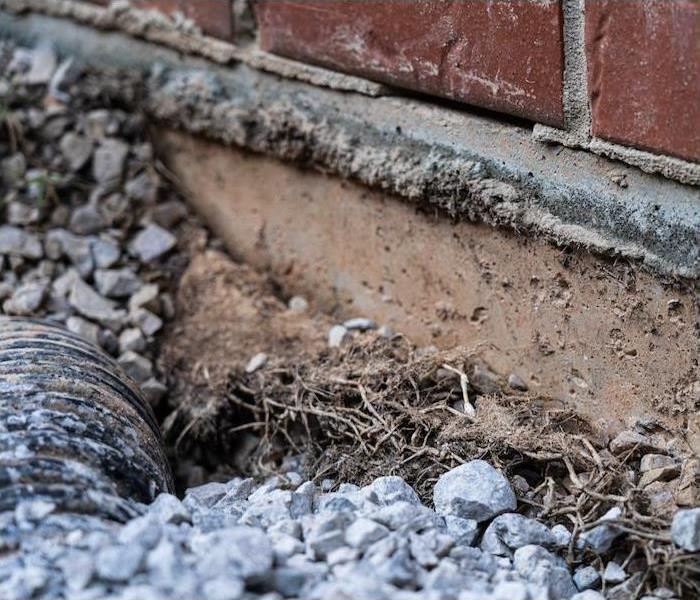 If you have water damage in your home, contact us right away. SERVPRO of Clatsop, Columbia Counties is your local water restoration expert.
If you have water damage in your home, contact us right away. SERVPRO of Clatsop, Columbia Counties is your local water restoration expert.
Have you ever been awakened by water dripping on your nose? Or been frustrated by a burst pipe? People often experience these flooding mishaps—they’re hard to miss, and the solutions are obvious.
However, water underneath your home or business also creates problems, perhaps worse ones. Water can do plenty of damage if it’s neglected, both to people and property. Let’s discuss water in your foundation and/or basement—and how you can dry it out before it becomes a problem.
Sources of Low-Lying Water
Maybe you sometimes see water standing in your basement, or find that your basement walls are damp to the touch. Rainwater draining under your house is one common cause. Faulty construction, such as crevices at joints or openings around where pipes enter, may also let water in.
Why Worry About Hidden Wetness?
Though it isn’t instantly annoying, dampness in your foundation, crawlspace or basement can harm health and structures. Encouraged by damp conditions, mold can grow, making people sick. Water seepage may also crack concrete walls and rot joists, leading to potentially severe structural issues.
Protection Via Landscaping
Your first step to halting low-lying water is to keep it away from your home or business. Your structure should lie slightly uphill of the ground around it. Try creating a gentle grade of about an inch per foot, for at least six feet all around your home to encourage rain water to drain elsewhere.
Protection Via Construction
Anything underground will come into contact with some dampness, of course. But it’s important for that dampness to stay outside…not in. Drain tile systems and drainage pipes known as French drains can help steer away unwanted water, as can a sump pump.
Though it may take some investment of time and money to protect your basement or foundation from water damage, it’s better than finding mold or, worse, structural problems. If you ever do end up needing restoration due to low-lying water damage, give SERVPRO a call!
If water damages your home, we’re there for you. Contact us at any hour for a consultation or immediate assistance.
Detecting Toilet Leaks | SERVPRO® of Clatsop, Columbia Counties
10/16/2020 (Permalink)
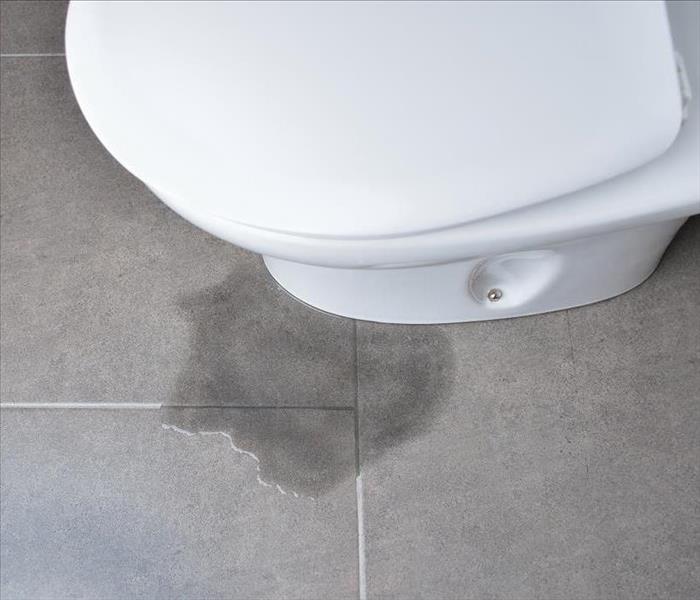 This is a toilet with a visible leak.
This is a toilet with a visible leak.
When you think about water damage to your home, you may picture something dramatic—a floor or burst pipe. But slow leaks can cause damage, too, as well as encourage black mold, which is dangerous to your health.
One common source of higher water bills, home damage and mold accumulation is a leaky toilet. Let’s look at why it’s important to identify toilet leaks, as well as how to detect them.
Breathe Safely
Leaking toilets can encourage the growth of mold—colonies of tiny, living organisms that thrive in moist, stagnant, dark environments. The darker molds pose the most danger. They can cause allergic reactions or asthma attacks—and even worsen chronic obstructive pulmonary disorder.
As well as causing mold, leaking toilets can lead to damaged floors and walls. Wood or drywall may eventually need to be replaced. In any event, you need to detect leaks quickly.
Find the Leak
Common signs of a leak will vary depending on where it occurs.
External leaks may cause:
- Water around the base of the toilet
- Discoloration or loose tiles around the base of the toilet or behind the toilet
- A “soft” feeling to the floor around the toilet
Interior leaks may cause:
- Sounds of water running or “ghost flushes”
- Having to hold or jiggle the handle to complete a flush and stop the toilet from running
You can confirm an interior toilet leak by dropping food coloring into the tank. If the color appears in the bowl without you having flushed the toilet, you have a leak between the tank and bowl.
Fixing the Leak
Depending on your skill and interest level, you may want to fix the leak yourself or defer to a plumber.
Exterior leaks, which are most often responsible for mold and home damage, may be harder to fix. For interior leaks, though, you can often attempt an easy fix by making sure the flapper seats tightly after every flush and checking that the chain is the right length to allow the flapper to open and close properly.
From fire to storm to flood, disaster can strike at any time. Contact us at any hour for assistance.





 24/7 Emergency Service
24/7 Emergency Service












